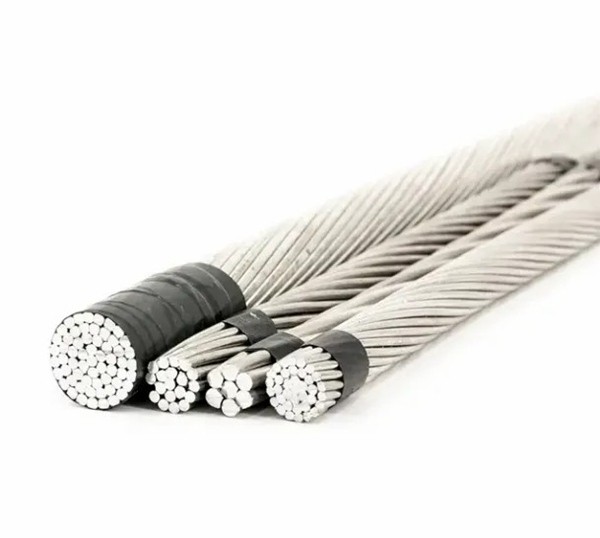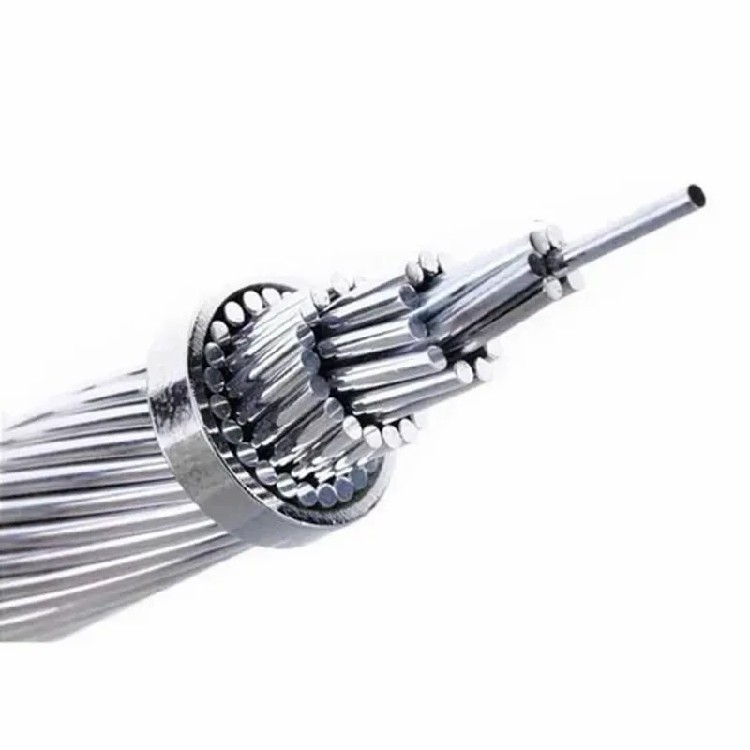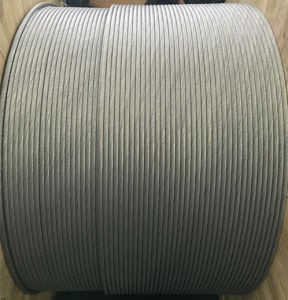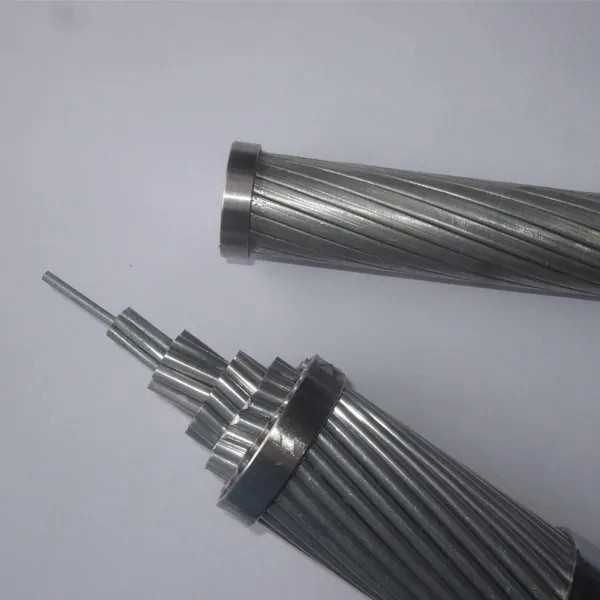ACSR: The Backbone of Modern Power Transmission
Product description
Aluminum Conductor Steel Reinforced (ACSR), known as 钢芯铝绞线 in Chinese, is a composite overhead electrical conductor composed of a high-strength steel core surrounded by one or more layers of aluminum strands. The central steel core provides exceptional tensile strength to withstand mechanical stresses like wind, ice loading, and gravitational forces over long spans, while the outer aluminum strands deliver optimal electrical conductivity for efficient power transmission257.
Standardized under designations like JL/G1A, JL/G2A, and JL/G3A, these models differentiate between ordinary strength (G1A), high strength (G2A), and extra-high strength (G3A) steel cores. Specifications such as "JL/G3A-1250/70" denote a conductor with 1250 mm² aluminum section and 70 mm² steel core, engineered for extreme mechanical demands in challenging environments like high-altitude installations35. Larger variants—such as 1250 mm² sections—adopt multi-layer aluminum designs (up to four layers) to enhance flexibility, reduce surface electrical field intensity (minimizing corona discharge), and increase power transfer capacity without requiring additional tower infrastructure3.

Basic Applications
ACSR serves as the primary backbone for high-voltage overhead transmission networks globally, particularly in lines operating at 66kV and above. Its applications span multiple critical domains:
Long-Distance Bulk Transmission: Essential for inter-regional projects like China’s ±800kV Lingzhou-Shaoxing HVDC link, transporting gigawatt-level power across hundreds of kilometers39.
Urban Grid Upgrades: Enables capacity expansion in space-constrained cities by replacing existing conductors with higher-ampacity ACSR variants—no need to modify towers19.
Geographically Challenging Routes: Its strength-to-weight ratio allows wide-span installations across rivers, valleys, and seismic zones where conventional cables falter27.
Substation Buswork: Used for high-current bus connections due to its thermal stability and mechanical resilience1.
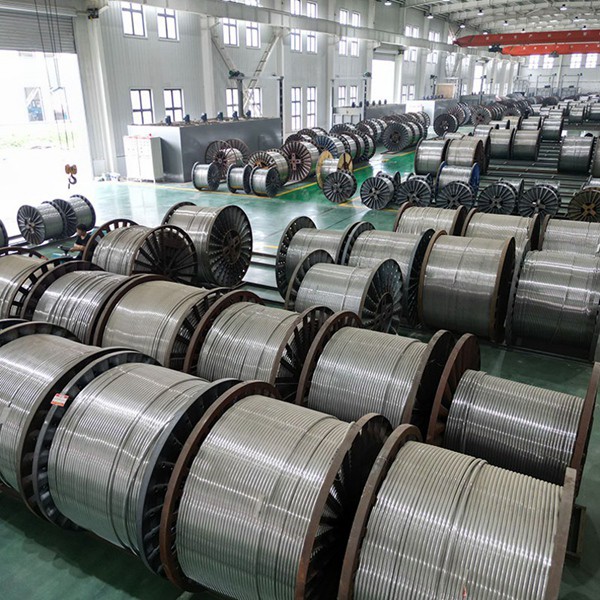
Key Advantages
ACSR dominates global transmission infrastructure through a balance of performance and economy:
High Strength-to-Weight Ratio: Steel core supports long spans (reducing tower count), while aluminum minimizes overall weight9.
Cost Efficiency: Aluminum’s lower cost versus copper makes large-scale projects economically viable79.
Enhanced Conductivity: Aluminum’s 61% IACS conductivity, combined with large cross-sections (e.g., 1250 mm²), reduces resistive losses by up to 30% compared to traditional designs39.
Corrosion Resistance: Natural aluminum oxide layer and galvanized steel core offer durability in diverse climates, though acidic or coastal environments necessitate protective coatings810.
Ease of Deployment: Simplified installation and maintenance reduce operational downtime and lifecycle costs27.

Five Common Questions & Answers
Q1: Why combine aluminum and steel instead of using pure aluminum or copper?
A: Pure aluminum lacks the tensile strength for long spans, while all-copper conductors are prohibitively heavy and expensive. ACSR’s hybrid design leverages steel for mechanical support and aluminum for cost-effective conductivity. This synergy enables economical, long-distance power delivery where pure metals fail279.
Q2: What do ACSR model codes (e.g., JL/G3A-1250/70) signify?
A: The coding system standardizes performance attributes:
JL: Aluminum-clad steel core (additional letters indicate variants).
G3A: Extra-high-strength steel core (G1A = standard, G2A = high strength).
1250/70: Aluminum cross-section (1250 mm²) and steel core area (70 mm²)35.
This nomenclature ensures precise matching of conductor properties to project requirements like voltage level, span length, and environmental load.
Q3: What are frequent quality issues during ACSR manufacturing?
A: Common defects include:
Surface scratches: Caused by worn drawing dies or dirty guide rollers, increasing corona discharge risk10.
Strand loosening/“lanterning”: Results from inconsistent tension control during stranding or improper die sizing410.
Oil contamination: Poor lubricant management in wire-drawing stages10.
Mitigation involves precision die selection, tension calibration, and rigorous cleanliness protocols during production410.
Q4: How do compression sleeve defects impact ACSR reliability?
A: Faulty compression joints—responsible for ><|place▁holder▁no▁797|> of field failures—include:
Uncompressed anti-slip grooves: Increase steel core load share, risking breakage.
Insufficient aluminum sleeve length: Causes uneven load distribution between aluminum and steel layers6.
X-ray imaging and pull-testing verify joint integrity, with strict standards enforced to prevent cascading failures6.
Q5: How does ACSR perform in corrosive or high-friction environments?
A: While aluminum resists atmospheric oxidation, acidic conditions accelerate corrosive wear. In coastal/industrial areas:
Steel cores require heavy galvanization.
Micro-motions between strands near clamps cause fretting wear, combining adhesion, abrasion, and corrosion8.
Solutions include corrosion-inhibiting gels and periodic inspections in high-risk zones810.
Recommended products
